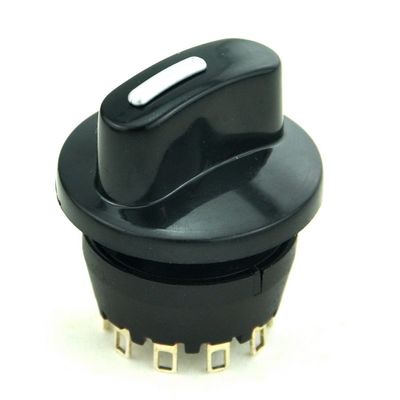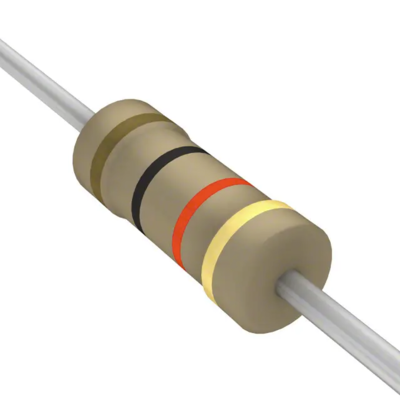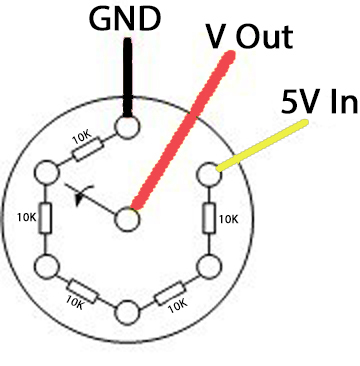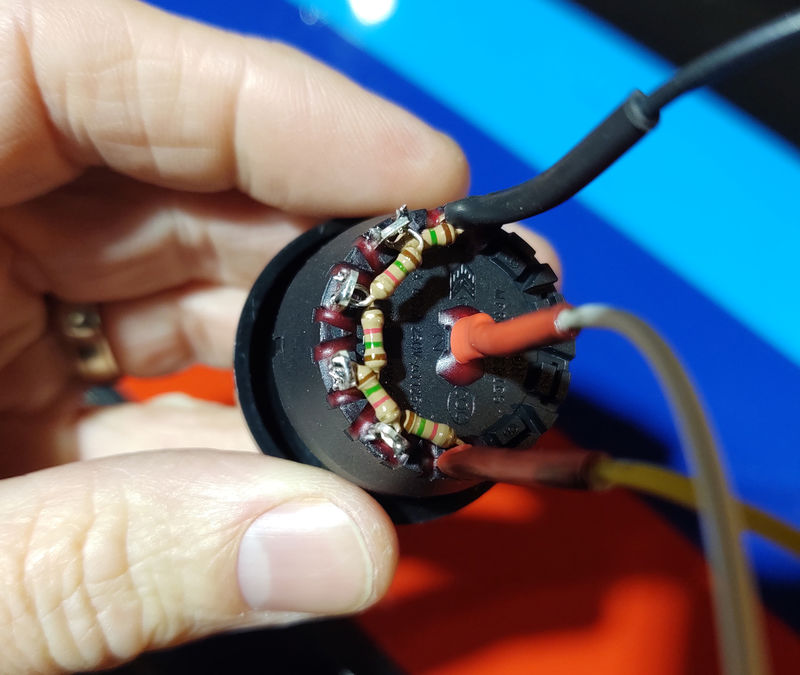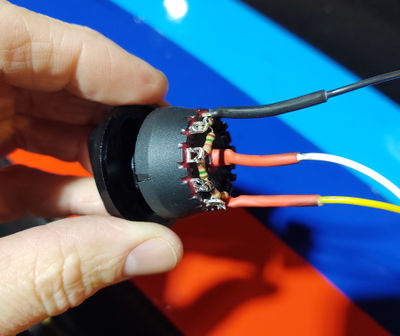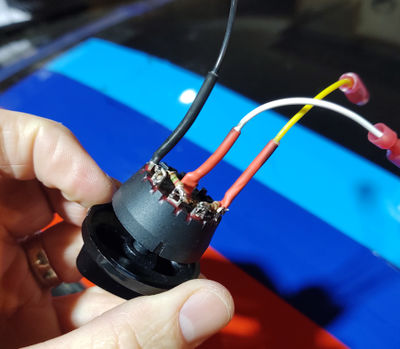DriverID Selector Switch: Difference between revisions
(→Wiring) |
(→Wiring) |
||
| Line 121: | Line 121: | ||
[[image:DriverSelectorSwitchAnotated.jpg|800px]] | [[image:DriverSelectorSwitchAnotated.jpg|800px]] | ||
*Solder the resister for Driver 2 between switch position 1 and switch position 2, down low on the posts | |||
*Solder the resister for Driver 4 between switch position 3 and switch position 4, down low on the posts | |||
*Solder the resister for Driver 6 between switch position 5 and switch position 6, down low on the posts | |||
*Solder the resister for Driver 3 between switch position 2 and switch position 3, up high on the posts | |||
*Solder the resister for Driver 5 between switch position 4 and switch position 5, up high on the posts | |||
*Solder the resister for Driver 1 onto switch post position 1, sticking up | |||
*Solder a 2 wires to the other side of of the resister for Driver 1. One wire for 5V in (yellow in pic above), and one wire for RCP Analog input (white in pic above) | |||
*Solder the 10K resister inline with the 5V wire (yellow in pic above) | |||
*Solder ground wire to the center post | |||
*Use heat shrink tube to protect the wires | |||
[[image:DriverSelectorSwitchAnotated2.jpg|400px]] [[image:DriverSelectorSwitch3.jpg|400px]] | |||
===Race Capture Settings=== | ===Race Capture Settings=== | ||
Revision as of 20:47, 5 February 2020
DriverID Selector Switch allows you to easily select which driver is driving so that you can quickly and easily see who was driving in the data later by looking at the DriverID channel. Just assign each driver a number, and tell them to turn the switch to their number when they get in.
{{#evu:https://www.youtube.com/watch?v=vGHrShqMUa4}}
Parts Needed:
1 pole Selector Switch:
- 2 Position Switch - $10
- 3 Position Switch - Currently NA
- 4 Position Switch - $6
- 5 Position Switch - $10
- 6 Position Switch - $10
- 7 Position Switch - Currently NA
- 8 Position Switch - Currently NA
- 10 Position Switch - $10
Resistors (1ea): For switches with 2-6 positions:
| DriverID | Resister | Voltage |
|---|---|---|
| 1 | 2.4K (2.2K will work) | 1.0V (0.9V if 2.2K used) |
| 2 | 3K | 1.75V |
| 3 | 4.7K | 2.5V |
| 4 | 8.2K | 3.25V |
| 5 | 22K | 4.0V |
| 6 | 150K | 4.75V |
| 10K | required for 5V voltage divider |
For switches with 7-11 Positions:
| DriverID | Resister | Voltage |
|---|---|---|
| 1 | 1K | 0.45V |
| 2 | 1.5K | 1.0V |
| 3 | 1.8K | 1.5V |
| 4 | 2.2K | 1.97V |
| 5 | 3.3K | 2.48V |
| 6 | 5.1K | 3.0V |
| 7 | 8.06K | 3.48V |
| 8 | 16.9K | 4.0V |
| 9 | 51K | 4.5V |
| 10 | 1M | 4.95V |
| 11 | 16 Ohm | 0.0V (If you need an 11th driver move this to Driver1 and all others down one position) |
| 10K | required for 5V voltage divider |
You can get these resisters from Digi-Key.com and search by resistance. Try to get as close as possible.
If you get different resisters than ones above, you can use this link to figure out what the output voltage will be. Set Vs to 5V, R1 to 10K. For R2, take the resister you have and add all of the resisters before it, to get the total resistance. It will calculate Vout for you. Use this to map your sensor inputs in Race Capture App.
http://www.ohmslawcalculator.com/voltage-divider-calculator
Wiring
- Solder the resister for Driver 2 between switch position 1 and switch position 2, down low on the posts
- Solder the resister for Driver 4 between switch position 3 and switch position 4, down low on the posts
- Solder the resister for Driver 6 between switch position 5 and switch position 6, down low on the posts
- Solder the resister for Driver 3 between switch position 2 and switch position 3, up high on the posts
- Solder the resister for Driver 5 between switch position 4 and switch position 5, up high on the posts
- Solder the resister for Driver 1 onto switch post position 1, sticking up
- Solder a 2 wires to the other side of of the resister for Driver 1. One wire for 5V in (yellow in pic above), and one wire for RCP Analog input (white in pic above)
- Solder the 10K resister inline with the 5V wire (yellow in pic above)
- Solder ground wire to the center post
- Use heat shrink tube to protect the wires

